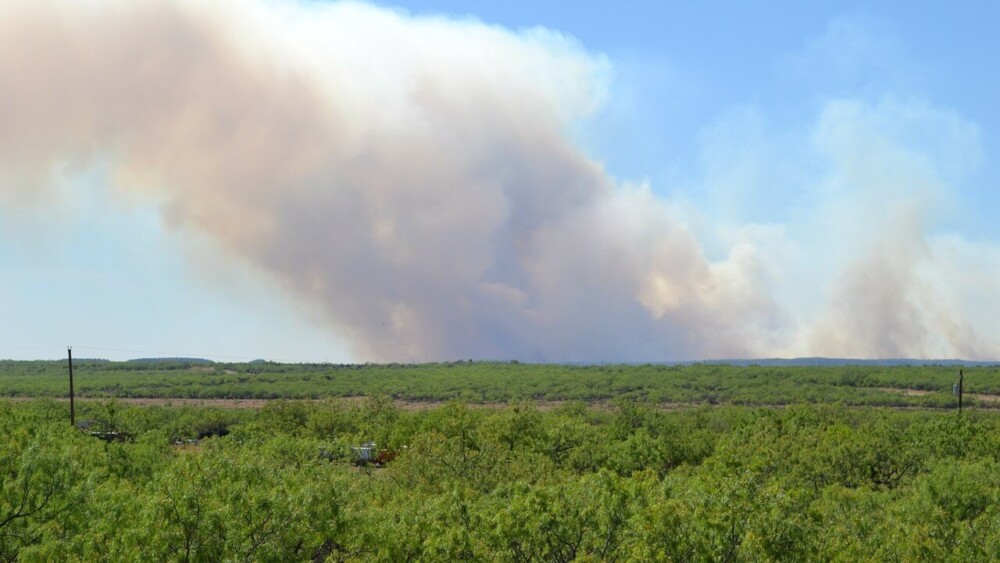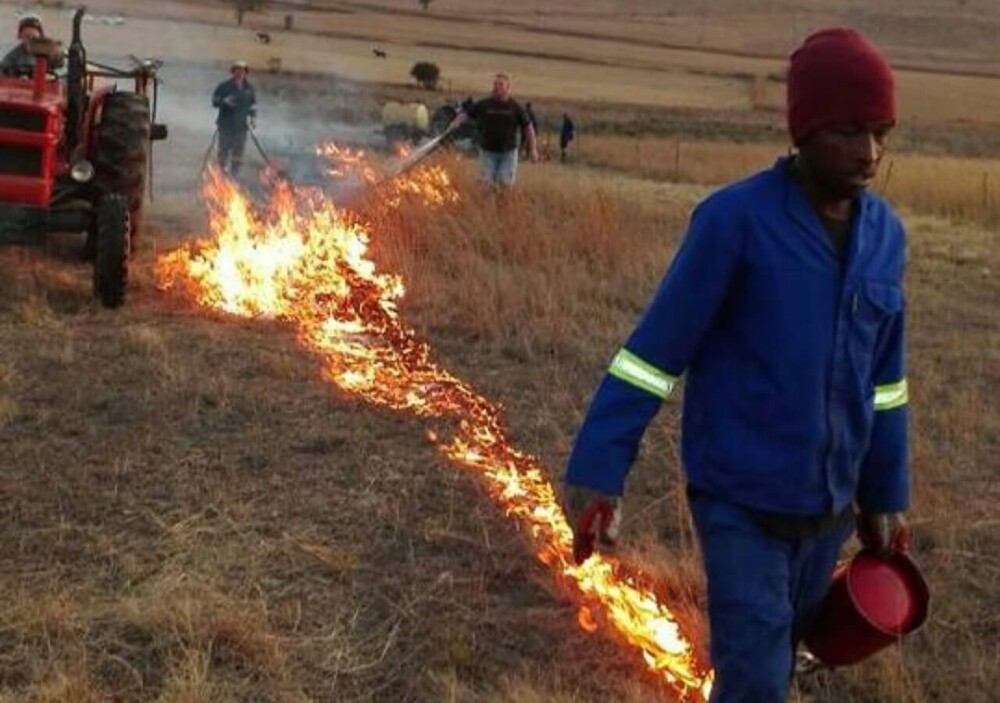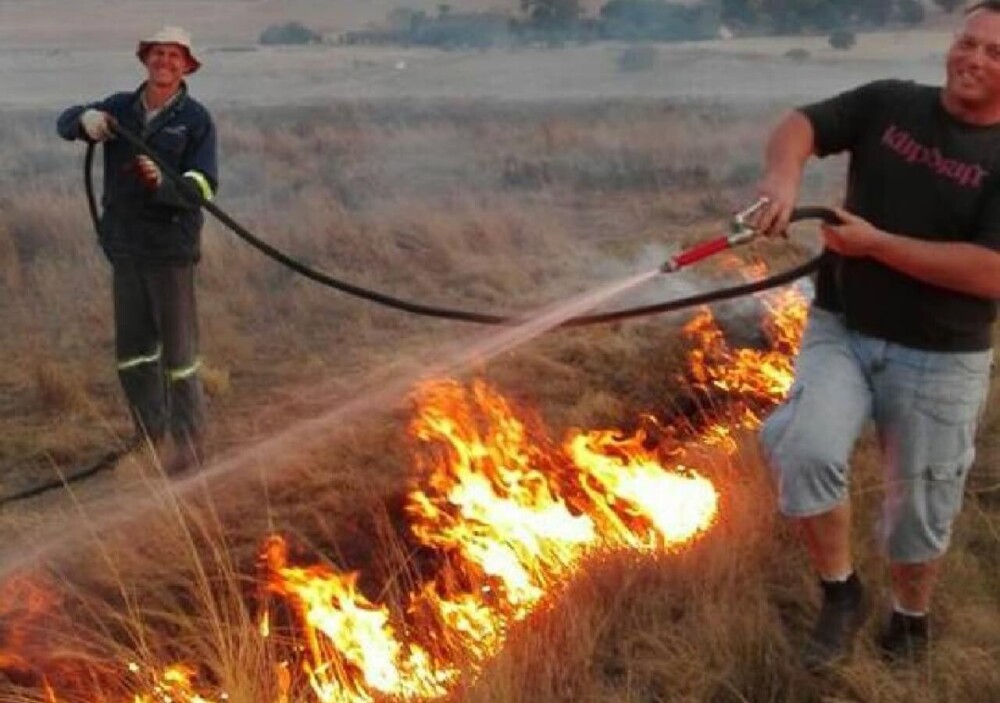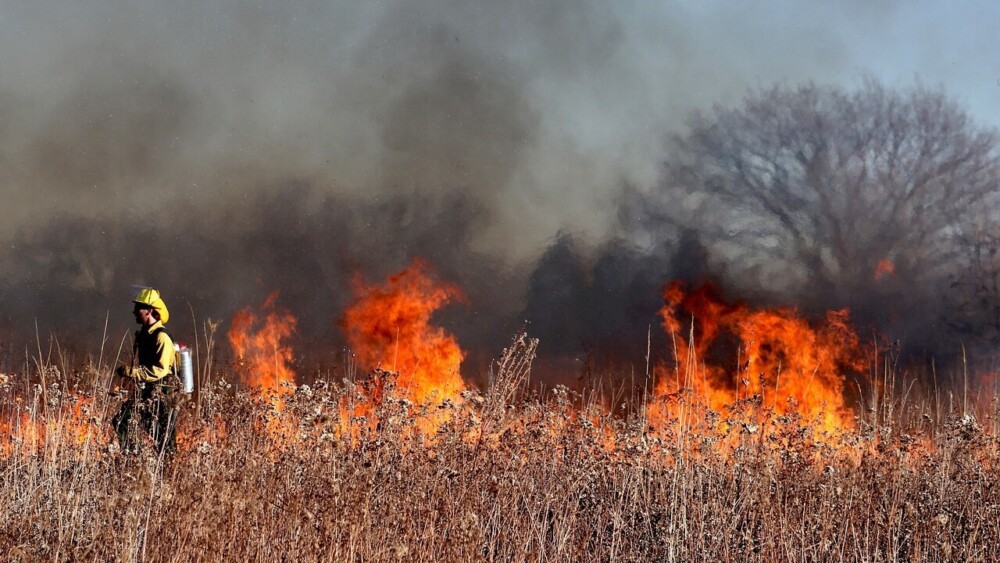There can be nothing worse than seeing black smoke rising on the horizon as a wildfire speeds toward your homestead, ranch, or smallholding. It’s a completely terrifying situation and you can’t always depend on public agencies to save your property or your animals.
How you can protect your home and property from wildfires: Ensure the safety of your property and animals using a system of firebreaks or fire lines around your property. Dividing your property using a fire management plan (FMP) to minimize loss to fire should you experience a wildfire will help save lives (yours and that of your animals).
Being informed and prepared is essential to help keep your farming dream from going up in smoke during the fire season. Let’s dive into how you can become a fire-responsible landowner and farm animal keeper.
1. Get Informed About Fire Management in Your Area
When you move to a rural area or own your own homestead, you probably dream about raising farm animals and pastoral bliss. But, fire is an unfortunate reality you will have to learn about to keep yourself, your property, and your animals safe. The best action you can take is to find out how fire management is scheduled in your area.
Contact your local forestry or land management bureau to find out who the fire coordinators are for your area. This is essential as most landowners, ranchers, and homesteaders work together to help keep each other and their properties safe.
The fire protection coordinator in your area will help you with information about the correct time of the year to create fire lines or firebreaks. You’ll get weather reports per day to help you determine which days are appropriate to create a suitable burn on your property. If there is a wildfire, they will assist you with firefighting and bring the fire under control.
2. Ensure You Have the Correct Fire Equipment Ready
To ensure you are prepared for a wildfire on your ranch or homestead property, you need to have more than just a garden hose. Make sure you have a vehicle that can travel into the area where the fire is raging by using fire roads or driving along perimeter fences to take water tankers and fire engines to the burn site.
The vehicle should be equipped with a water tank and a firefighter water pump that pumps water at a higher pressure to control the fire and suppress it where possible.
Additionally, you should have appropriate personal protective equipment, which in the least includes work boots, coveralls, or a Nomex jacket that are fire-resistant, heat-resistant face shields, and fire-resistant gloves.
Your fireteam should also be equipped with fire beaters (panels of conveyor belt or rubber to extinguish the fire), backpack pumps, or if you have the budget for it, you can invest in a foam sprayer.
Around the barn at central points, you should have fire extinguishers as quick action can save your barn from becoming a roman candle. Keep a few of these around the house too.
3. Prevent Fires BEFORE They Start By Reducing Fire Hazards
Many fires can be prevented by ensuring you don’t have fire fuel or vegetation that are highly flammable around your property. In areas that are heavily forested, this is especially important.
Your local land management bureau or forestry department should have more detailed information about how to keep forest paths clear, what brush should be cleared out and when, and how to manage fires set by campers or visitors to your area.
Around your homestead and yard, ensure you don’t stack dried firewood against the sides of buildings. Clear paths to ensure easy access to fire areas. The best preventative to wildfires spreading is to create manual fire lines or contained burns to create areas of burned land known as firebreaks.
Firebreaks Prevent Uncontrolled Fires
Firebreaks are effective if they are wide enough to counter the spread of fire. Because the vegetation is already burned in the firebreak, the wildfire is denied one of the three things it needs to burn: fuel. Having firebreaks helps you stop a fire or at least slow it down if there should be a fire on your homestead property.
On my 400+ acres of land, we use firebreaks to create a system to manage property loss, prevent fires crossing into ours from neighboring properties, and we also use them to do whole-pasture burns that are designed to help flush green grass in spring.
Work with your local fire protection agency to help you design a fire management plan (FMP) that includes where you will create firebreaks, how you will make them, and when you will make them. Consult with your neighbors as it’s usually good neighborliness to make a firebreak with your neighbor’s help.
By law, you also need to inform your neighbors and the local fire department if you are making firebreaks on a particular day. If you fail to do so, and you lose control of your fire, you could be liable for damages and legal action.
How to Make Firebreaks on Your Property
If you’ve never made firebreaks in your life, you may be quite terrified by the prospect of making your own firebreaks around your property. It need not dissuade you from trying, and as long as you contact your local authorities beforehand, and work with your neighbors during the burn-season, you will be able to manage just fine.
In a nutshell, these are the steps involved in making firebreaks:
Step One: Burn the Perimeter of Your Property
This is the biggest burn you will do. It requires the most helpers and equipment, so plan effectively. You will be creating a firebreak around the outside of your property. The width of the firebreak is determined by the terrain and type of vegetation you have. The firebreak should be at least 10 feet, or twice the length of the flames you would have in that area.
Depending on the type of terrain you have and the combustibility of the vegetation, the flames can be small or huge. Fires burn hottest and biggest when they hit long grass, reeds, oil-rich brush, and trees. The problem with trees and long grass is that they create embers and flaming debris that float into unburnt areas, creating secondary fires. This means you can end up needing a firebreak that is between 100 and 200 feet in width.
To create your firebreak, there are two options: a manual plowed or disked area that has no fuel for the fire or burn a fire line or firebreak that consumes all the fuel in that area.
Here’s my fire team burning exactly such a firebreak on a gentle, sloping hill.
You can see there is a first fire line that is created with a drip torch or a Terra torch. Further back is a second fire line being drawn up by the backup team. Note the width this firebreak that will be as this is a sloping hill and the grass can grow quite tall in this area.
The first fire line is drawn with the Terra torch, allowed to burn a few feet, and then extinguished with the firehose. The second line of fire is allowed to burn towards the first line while it is extinguished on the opposite side. This creates a path of burnt grass and brush that will prevent wildfires from spreading.
This was a fairly safe burn as the grass is low, but you and your team should always wear PPE to prevent mishaps. A huge concern is smoke inhalation, so be sure to train everyone who is helping out.
While it’s fun to do firebreaks, remember you are responsible for everyone who helps—even if, like me, you have a crazy neighbor who’s done firebreaks since he was a boy and shows up in his shorts to help!
Watch Danger Areas: When we are burning, we have several helpers who follow behind the last tractor, armed with fire beaters to police any smoldering debris. Cow and horse dung are a firefighter’s worst nightmare as they are mostly grass, and if dry, they will smolder for hours and even make sparks that can cause a fire.
Be sure to extinguish burning animal dung or kick it into the burnt area where it can’t do any harm.
Before burning a firebreak, we cut the area of the firebreak using a tractor and slasher. If you don’t have these available, you can cut with a handheld brush cutter or even spray with a growth retarding poison that will limit the height of the grass in the firebreak area.
The Terra torch in action. Making firebreaks is hot work, so be sure to dress in the right protective clothing, especially when you are drawing the fire line.
Step Two: Burn Internal Firebreaks
Using the same method, we burn firebreaks between different pastures or paddocks. This is to limit the chances of a wildfire running. It also creates a natural stopping line for any fires and gives us time to evacuate any animals that may be grazing in these pastures.
After the fire season has passed, when we receive our first rains, we receive notification from the local fire authority that it’s now safe to do whole pasture burns. This is ideal to help freshen up grazing and encourage grass to flush or grow rich and dense.
Some wild grasses do well with an annual or bi-annual burn. In a natural grazing situation, there will also be herbs and legumes that require fire to activate their seeds, which is why burning a whole paddock at the right time is essential. However, overburning a pasture or paddock can cause erosion and the proliferation of weeds and inedible plants.
Step Three: Fire Management
Sometimes, despite all your best preparations and firebreaks being in place, you end up with a wildfire running through your property. This can be chaotic and dangerous. Your animals are already scared, so you need to be calm and efficient in your fire suppression actions.
First, contact your local fire management authorities, informing them of the exact location of the fire, how to safely reach it, and also tell them what resources you have. If your water pump isn’t working, you need to mention this as it will mean the people coming to help you will need to bring their own pre-loaded water tanks.
Second, plan how you will approach the fire. If it is a fast-burning fire, you may need to create a back burn, where you burn an additional firebreak in the path of the fire in an area where there is less vegetation. This can help cut off the fire from its fuel sources, smothering it.
With slower fires, you need to decide where the fire head or main area of burning is, and cut that off by using water sprayers and fire beaters to put out the fire. From the area of the most burn, you can then work your way down the fire edge, suppressing the flames where you can.
If you have a fire in high wind conditions, you may need to focus your efforts on saving your livestock and possessions instead of trying to fight the fire. This is the most dangerous situation, and it can cost you everything you have. Attempting to fight this kind of wildfire without proper training and high-tech equipment or manpower can cost you your life too.
Wait for professional firefighters to show up and assist you or clear the area.
Whether the wildfire is under control or running, ensure some of your staff or family members are ready to secure the animals in your care. If you have a barn, you can use it to shelter your animals, provided you’ve used fire retarding paint on the sides of your barn and ensured there are no fire fuel sources stacked up against the barn such as firewood, hay, or sawdust.
Five Steps to Prepare for Fire Season
Before the fire season starts, you need to prepare. This will require the following tasks and actions:
1. Think Defensively
Fire needs fuel to burn, so be sure to strip away low-hanging branches near your home and along the perimeter of your property. Keep a cleared space that is fuel-free around trees or forests. This means you need to do property maintenance during the year when there are no fires.
Remove the branches you cut and don’t leave them to dry out where they can catch fire during fire season.
Worst-case scenario, you will have a wildfire that destroys all your paddocks and pastures. If you consider your yard and home as the last line of defense, you can create a barrier that will repel most fires. Ensure there are no tall trees immediately near your home.
Plant a hedge of green vegetation that will not burn easily around your yard, or better yet, ensure there is an area of well-trimmed grass that will not produce high flames around your home.
Work on the principle of twice the expected flame height, and you can create a bare strip or barrier of up to 200 yards. I like making a sandy stretch that runs around the yard, which serves as a little racecourse for my kids to race their ponies on and keeps the fires away from the yard and our home.
Having a stone wall around the outside of your yard will also help by being a fire-retarding barrier. Avoid having wooden picket fences immediately around your yard or home as these are highly flammable.
2. Clean Up
It’s natural during winter for dead plant matter to accumulate, and this can provide tinder for fires, so clear out gutters, sweep out old storerooms, and ensure you keep your farmyard nice and neat. Rotting bales can easily become firebombs when there is a fire in the area. Don’t leave those around. Ensure your muck heap gets cleaned out regularly too.
Check firebreaks for any branches or hay that may have landed on them once you’ve burned as these can lead to fire spreading. Rake fallen leaves from firebreaks, and ensure you don’t have leaves accumulating in your yard either.
3. Get some Training and Practice
While we all hated fire drills at school, it’s a good idea to have a fire drill at least once a season. Check whether everyone knows where they should go and what they should do when there is a fire. Make sure your family and ranch hands know the answers to these questions:
- Who is supposed to find the keys to the truck with the water tank on?
- Where should your children go?
- Who is responsible for the animals in the yard?
- Which possessions should you save if there is a fire that reaches your house?
On the training front, does everyone who will help during a fire know what to do? Be sure to explain to everyone what they should do when there is a fire. Appoint one person, who is most knowledgeable about fires, as your personal fire boss. This person is the voice of calm and will give instructions about what to do and who must do it.
Your fire boss also decides when it’s time to move forward to the fire or retreat away.
Train your family in an escape plan too. If the fire breaches your yard, it may be time to evacuate. If you do so in a calm and orderly manner, you and your livestock can safely make it out of the burn zone.
Prepare by finding the areas near your property that will be naturally fire-resistant. Streams, wide roads, and rocky ledges are good fire barriers. Check where these are, plan your route there, and be prepared.
4. Check Your Equipment
Don’t wait until there is a fire before you discover your water tank has a hole in it or your water pump for the tank isn’t working. Simple things like seeing your truck has a flat wheel can cost you valuable time to remedy, and it can end up costing you all of your grazing and the lives of your animals.
Fix leaking water hoses, repair or replace clamps, and ensure the fire nozzle is working efficiently. Check the condition of your fire beaters, and make sure they are in easy reach for when you need them. Keep a Terra torch ready with a mix of diesel and gasoline so you can draw a back burn line if necessary.
Keep your water tank and fire truck ready for action. Don’t wait to fill a 2,000-gallon tank until you see fire. Keep it filled and ready for use. Be sure you know where the keys are too. On the subject of trucks. Make sure to service yours before the fire season. Having your engine seize up in the middle of a fire can be catastrophic.
Create a place where you store your family’s PPE for fire season. Have your family’s heat visors, smoke masks, gloves, fire jackets, and fire blankets ready for use. In the smoke and confusion of a fire, you don’t want to go look for these.
5. Remember These Safety Steps
Be sure the fire department can find your home. Have a clear sign on the main road to indicate how to get to your homestead. If there is fire and smoke, have someone in a reflective vest stand at the property entrance to help signal firefighters where to go.
If you have gas on your property, be sure to turn the lock valve on these to ensure they don’t leak and add to the fire hazard.
Conclusion
Stay calm! Fire is a primordial force, and it naturally scares us. But remember not to panic. Practice fire drills, get comfortable with moving your animals into paddocks and into the barn, and know you are prepared, and you will feel calmer and more organized. Manage your property efficiently: keep it tidy, keep it short, and keep it organized.
Effective preparation will ensure your animals and you have the best possible chance of surviving a fire and minimizing damage too.






